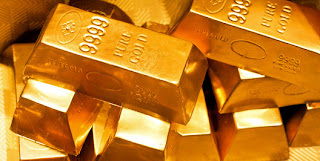History of Forex Part 1
Forex traders learn all the tutorials carefully to get to know the insider’s part and rules of Forex trading. But when it comes to Forex history, sometimes it is skipped as something not so important comparing to other topics and tutorials. But that’s completely wrong. History is the basic and the core of every discipline, and considering Forex trading as discipline, Forex history is the core of it too. Learning the foreign exchange history, trader can self-educate himself and get the required knowledge on the economical mechanism, that rule the Forex trading market and all the areas around it.The following events will be explained in this tutorial:
- The Gold Standard
- The Bretton Woods System
- Fixed exchange rates
- The International Monetary Fund (IMF)
- Floating exchange rates
- Smithsonian agreement
Part I
Foreign exchange as the happening had appeared in the very early periods of human history. Tribes and people had to exchange some goods one for another. The value of each good was expressed in the quantity of other goods. Such currencies as stones, sticks, shells, teeth and so on soon became the criterion of other goods’ prices. But this money surely was insecure, so the people switched to the more reliable goods soon. But of course no talking of foreign exchange in its real way can be held on this stage of Forex trading history.Foreign exchange in fact appeared with the appearance of so-called bills, or paper money that served instead of different currencies in the Middle Ages. But still the main historical events and economic happenings that led to the establishment of the Foreign Exchange Market as we know it today happened later, or exactly in XIX-XX centuries.
With the start of using of paper money, the advantages of this form of money over the metals became obvious. Still the value of the national paper currency was determined only due to the gold reserves of some certain country. The more gold was lying in the reserves of the particular country, the more power and value had its currency. The name of this system was The Gold Standard. The leading currency of that time was surely pound sterling, though it was the most gold-supported currency. So as the result, England became very authoritative country among the currency markets at that time
Thankfully to the scientific and technological progress, by the end of the XIX century the world economy started developing really quickly, with the speed that world has never known before this. Because of these conditions, the people started to understand the way the world economic activity tends to work, and it was working in cycles, from prosperity to recession and again. Surely it was what affected currency exchange rates greatly. From that time national currencies could devaluate and revaluate in a boom-bust regime. Inflations could replace economic growth on the instant (which happened very frequently at that times in almost all European countries, and the US even faced the Great Depression), because it often turned out that the supply of paper money in a certain local country did not always correspond to the gold cover of this country, and nobody was responsible for that.
This ongoing volatility of the Golden Standard system and the lack of universal rules regulating currency relations were highly inconvenient for the most governments. However, then there was World War I, and that initiated the greatest changes ever in the world economy, and in the sphere of the currency market in particular. Here where’s the second part of Fx history comes

ไม่มีความคิดเห็น:
แสดงความคิดเห็น